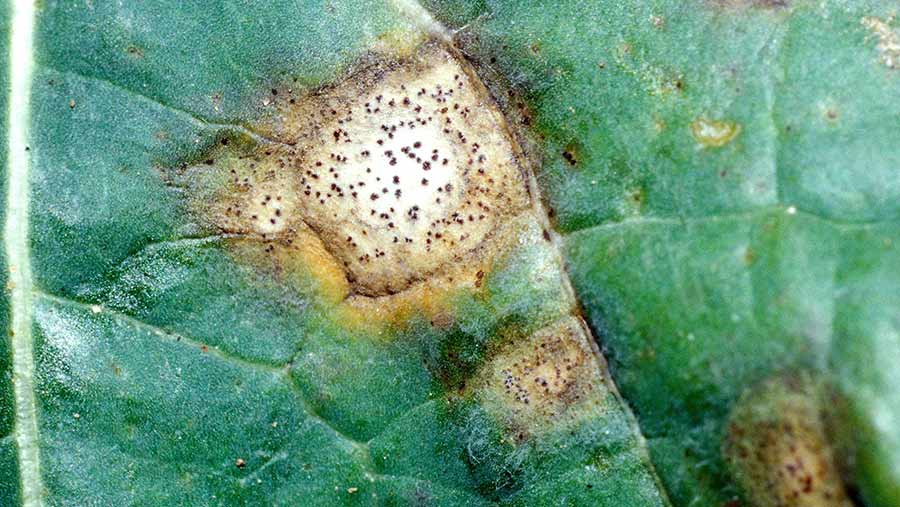Oilseed rape phoma alert as spray threshold hit in Herefordshire
 Typical phoma leaf spot on OSR © Blackthorn Arable
Typical phoma leaf spot on OSR © Blackthorn Arable Oilseed rape growers should be examining their crops for phoma disease as one site in Herefordshire is predicted to have already reached the fungicide spray threshold.
The site at Adas Rosemaund, just north of Hereford, is the first site forecast to have hit the threshold level of 10% of the crop infected, which indicates the need to consider a spray treatment.
Catherine Harries, who manages disease research at the AHDB, says phoma onset appears to have started relatively early this autumn at some locations.
See also: OSR Masters: Oilseed rape growers plan a strategy for this season
“Late-summer and early autumn rain speeds up the maturation of phoma spores on stubble.
“In some areas, it was relatively wet over this critical period, hence the potential early onset.
“In fact, there have been some field reports of early spotting in crops,” she says.
Big variation
There is a lot of variation across the country, with south-east England being very dry up to a week ago, which tends to delay disease development.
Therefore, growers should check the phoma forecast on the AHDB site, monitor for disease spots and treat susceptible varieties when thresholds are reached.
The forecast monitors temperature and rainfall from 1 July to 26 September, which simulate the development of Leptosphaeria maculans, a key pathogen responsible for phoma leaf spot and phoma stem canker.
The forecast predicts the date when 10% of oilseed rape plants could potentially show symptoms of phoma leaf spot.
This level of infection relates to a treatment threshold for varieties with lower disease ratings for stem canker.
The AHDB suggests the following action points:
- Monitor crops for phoma leaf spots.
- Look on the underside of leaves, if white tufts (mycelium and spores) are present, the symptom is downy mildew, not phoma.
- A fungicide applied as close as possible to a threshold helps maximise its effect.
- Treat varieties with lower resistance ratings for stem canker (7 and below) and backward crops first, when 10-20% of plants have phoma leaf spot.
- Only treat varieties with high resistance ratings for stem canker (8-9) if more than 20% of plants have phoma leaf spot.
- When reinfection occurs, consider a second spray – typically, four to 10 weeks after the first spray.
- Adjust spray programmes to account for any late-autumn fungicide (November) required for light leaf spot control.
- Access the forecast and fungicide performance data via ahdb.org.uk/phoma.

